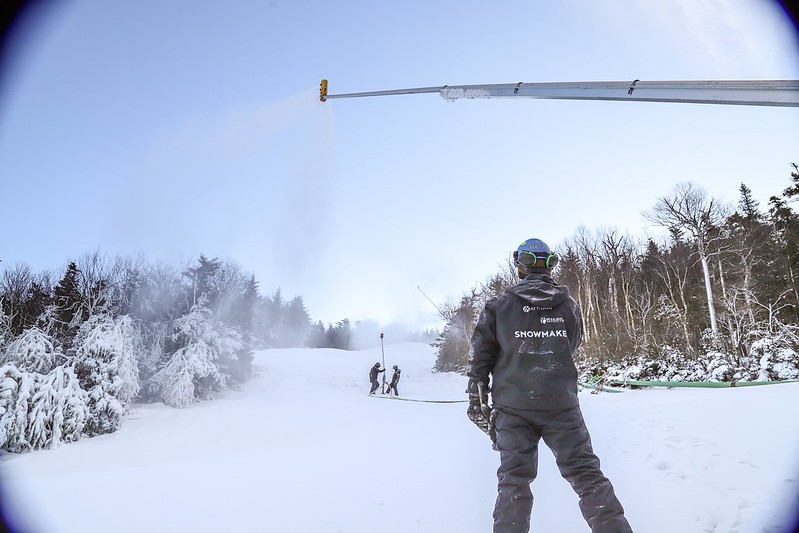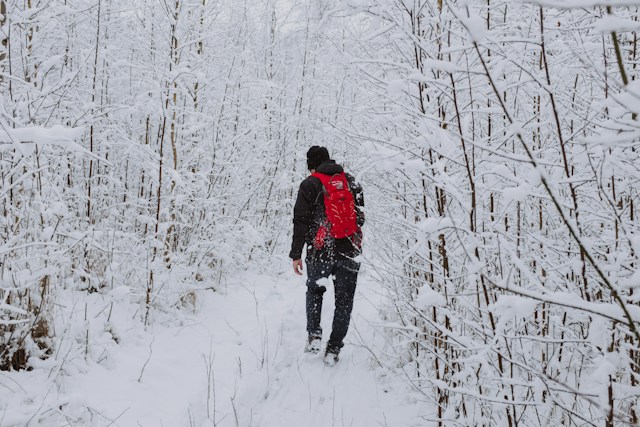
Hobbies are expensive. Whether you picked up golf clubs and decided it is your new obsession, or began riding motorcycles across the country, your hobbies cost a ton of money. It shouldn’t cost as much money as it does to explore and experience the world. Yet here we are. Winter gear is some of the most expensive apparel on the market, and it leaves many of us wondering if buying outdoor gear for winter is worth the money. It isn’t a straightforward answer, so we took a stab at it.

Do you get what you pay for with outdoor gear?
This is no easy place to start this piece, but in the interest of getting it out the way straight away, yes, you do. This is a tentative yes, not an outright certainty, and there are two major caveats I also want to address early.
Firstly, this is a sweeping generalization of outdoor clothing and winter gear, and there are plenty of items that don’t justify their price tag, along with plenty that would justify a much higher price. Secondly, just because you get what you pay for doesn’t mean you have to spend big to take part; remember that top-end outdoor clothing is generally designed for technical sports, not everyday hikers.

Why are companies like Arc’Teryx and Patagonia so expensive?
When you mention expensive outdoor clothing, certain companies always crop up. In the same forum thread, these companies will be revered for their excellent gear by some while also being demonized by others for their expensive snow pants leaking on day one. What most people can’t understand is how these companies justify their price tags while other, seemingly “similar quality” items are available on mass market websites that line the pockets of billionaires. You know what we’re talking about.
I can see both sides of this debate, but as far as justification goes, there are some generalizations we can look at. Companies with the highest price tags tend to be at the forefront of outdoor research and initiatives. Whether these are environmental goals like Arc’Teryx’s ReBird initiative, Haglofs working to reduce emissions and generate clean energy Patagonia making the earth a shareholder, or staying ahead of technical research, these initiatives need to be funded. Then there are factors like reliability, longevity, and an attempt to avoid the “fast fashion” craze, which means that companies have to put a high price tag on their items because they’re not deliberately building in obsolescence like your latest smartphone.

What are the benefits of expensive outdoor gear?
Other than knowing you’re most likely funding environmental projects and not lining the pockets of unscrupulous billionaires, are there benefits of outdoor and winter gear that can tempt you into saving up for that pricey new insulated jacket? Well, as I mentioned before, I’ve worn gear from the bargain bucket — and lost and found, but that’s a different matter — all the way to wince-inducing, close-your-eyes-as-you-pay prices. While I can’t speak for everyone, these are what I’ve found to be the major differences.
- More expensive gear is usually more comfortable. While it might be true that you can get a fleece for $20 or for more than $100, the more expensive option tends to have seams in places that don’t rub, the cut tends to be more athletic, it usually stretches more, and it moves with you and your layers rather than riding up as you hike.
- Cheaper gear often doesn’t breathe as well. From outer shells to base layers, moisture management is key to comfort in every outdoor season. In winter, it stops you from freezing or getting dangerously cold. All outdoor clothing has its limits for what it can cope with, but expensive layers often include materials like Merino insulation or membranes like Gore-Tex, or the fleece grid may be laid out in a way that promotes breathability.
- When I’m in a pinch, I know I can rely on my expensive gear in a way I never could on cheaper gear. Some people might argue this one, but when I’m sitting on that chairlift waiting out a snowstorm, I know I’ll be ready to ride at the top thanks to the gear I’m wearing.
- In my experience, if you look after that outdoor gear that you save up for — washing sleeping bags, waterproofing your tent, that sort of thing — it will last. There are exceptions, as I said earlier, but in general, I’ve found that I get a lot more use out of expensive gear. If I worked out a dollar-to-day ratio, I probably come out on top.

Do you need to spend big to experience the great outdoors?
No. I can see that confused look on your face even from here because this goes against everything I’ve just said, but the expensive outdoor gear isn’t a must-have to get outside. Think about the first time you went skiing. It was probably a bluebird day, and you didn’t need to wear a $500 jacket and matching snow pants to hit the bunny slope, did you? The same can be said for hitting the trail in the summer or heading out camping. Expensive gear is usually made for a technical market — big mountain skiers, thru-hikers hitting the trail for months at a time, and mountaineers. You probably don’t need the same jacket designed for summiting K2 to hit your local resort for a sunny afternoon.
If you want to, though, you can. If your affordable layers work for you, then I say go for it. Just remember that they most likely have technical limitations if you choose to push your boundaries. If you want more technical gear without the price tag, plenty of companies are recycling perfectly good outdoor clothing donated by kit hoarders just like me who want to see their jackets hit the dirt rather than just collect dust at the back of a closet.

Brands we love
Aether
“Wrong turns make great stories.” Aether was created after the partners found themselves disillusioned by the movie industry and venturing into the unknown of the apparel industry. Built on the framework that extreme experiences are less dangerous than the routine people get trapped in, Aether provides some of the best gear to get you out of the mundane office and into the adventurous outdoors.

Patagonia
Sold in ten countries across the globe, Patagonia is one of the most well-known brands in the world. And it landed that reputation not by not overcharging customers for products that aren’t worth it, but by offering the best of the best at a great price. Lucky for you, it is one of the most accessible brands on the market.

Arc’teryx
There is nothing better for a snow gear company to infuse the manufacturing with the environment. How do we know this company is worth the money? Because they are built in the mountains they are made for. The Coast Mountains provide one of the most unpopulated areas in the world, and the harsh conditions are perfect for testing these products.
Now that you have a list of the best snow brands in the world, you know that you can get the best of the best for an appropriate price.



